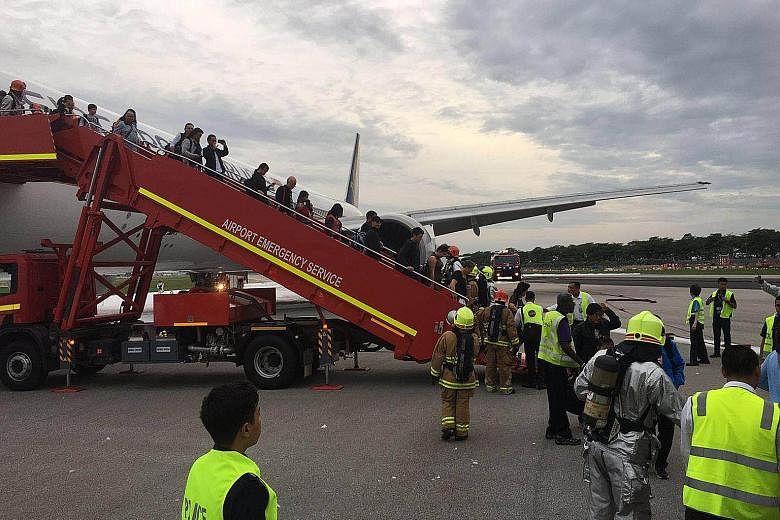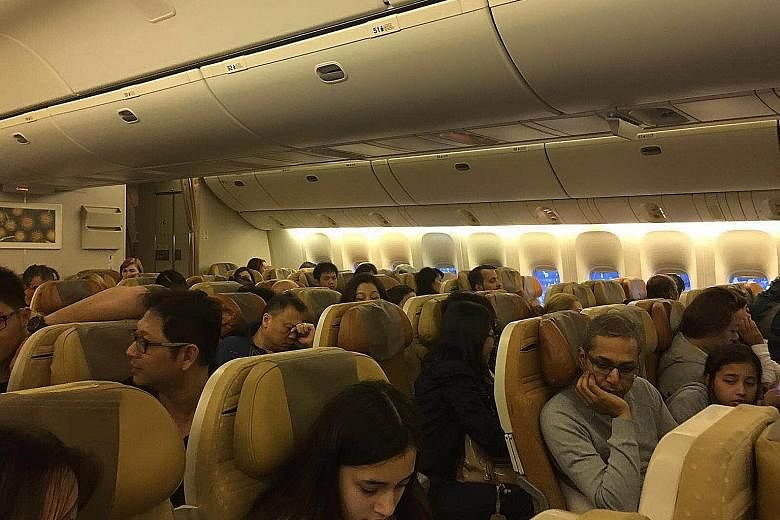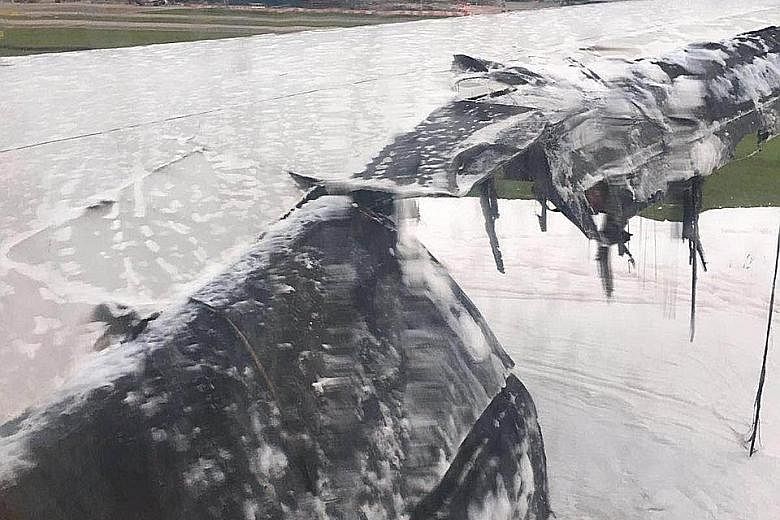An emergency landing of a Singapore Airlines (SIA) flight at Changi Airport yesterday morning has raised key questions on safety protocol and procedures.
SQ368, which left for Milan, Italy, at about 2am with 222 passengers and 19 crew members on board, was about an hour and 45 minutes into the flight when the pilots were alerted to an engine oil problem, which could have indicated a fuel leak. They decided to turn back.
Almost as soon as the Boeing 777-300ER landed at Changi Airport at about 6.50am, its right wing burst into flames. It took about five minutes for the fire to be put out, during which time passengers were kept in the plane.
Even as an official probe is being conducted, three questions are being asked:
• Should the plane have landed immediately instead of trying to fly back to Singapore?
• Should passengers have been left in the cabin for 20 minutes, from the time the plane landed until they could disembark?
• How could a possible oil leak escape preflight inspections?
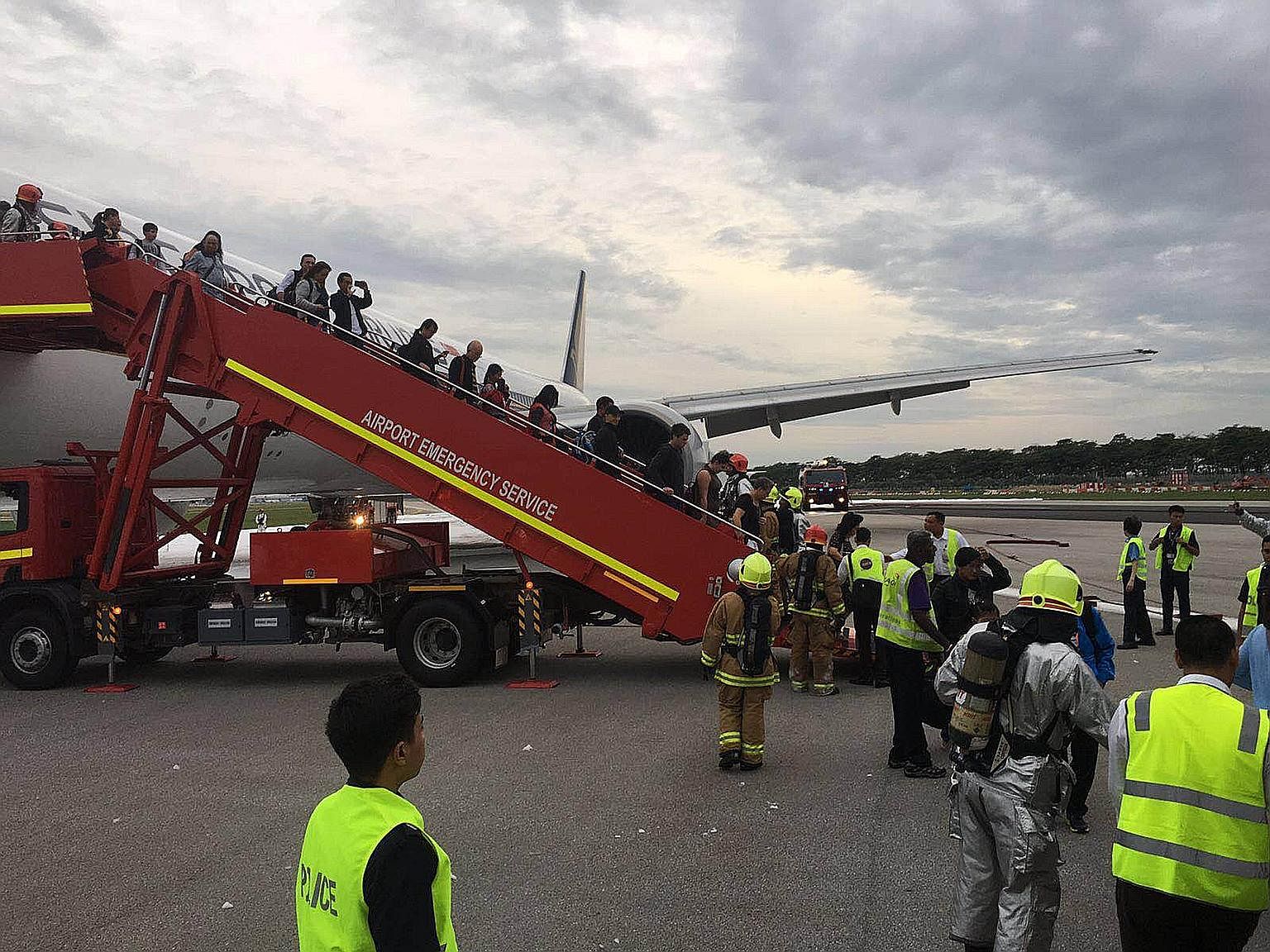
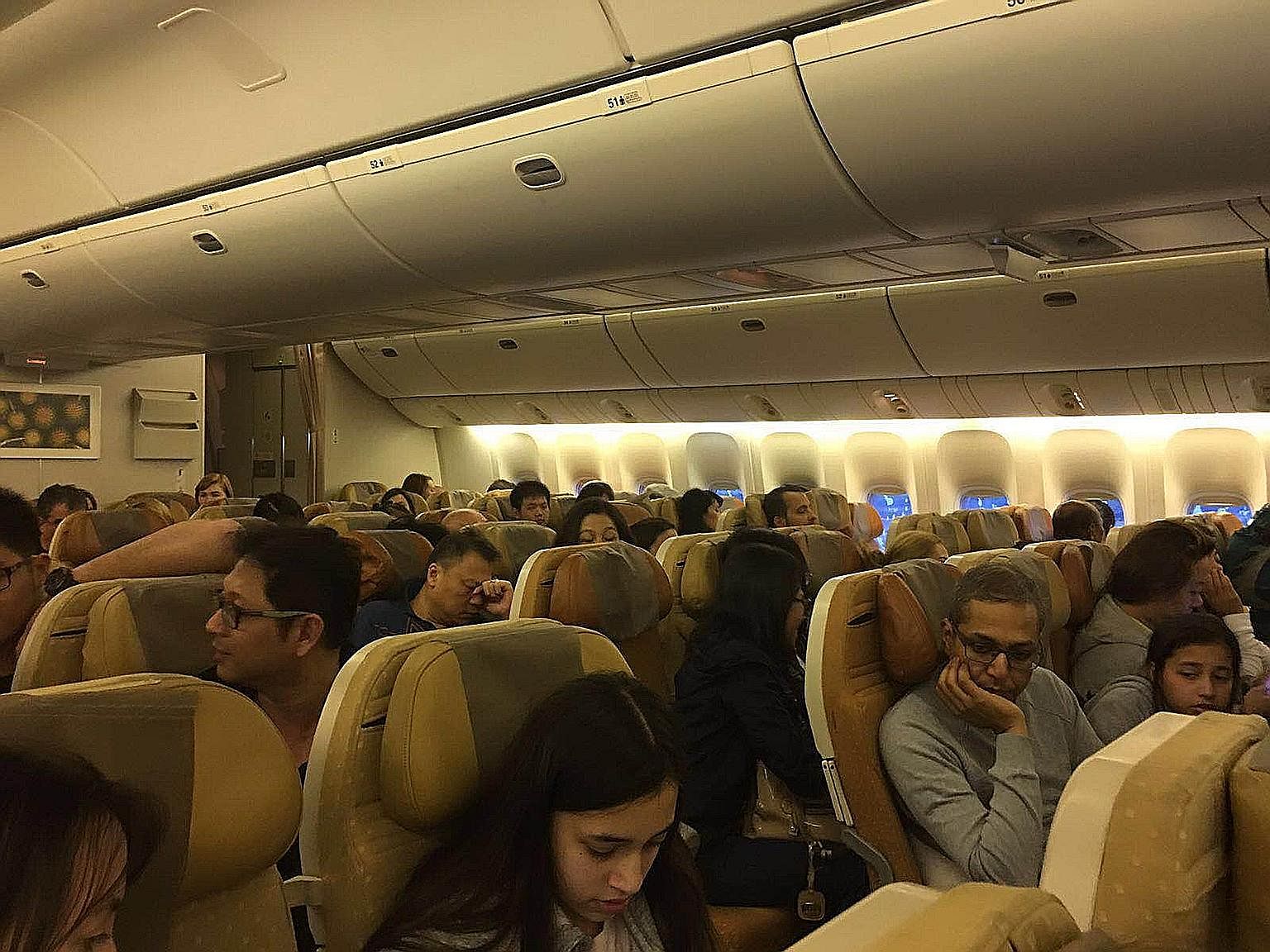
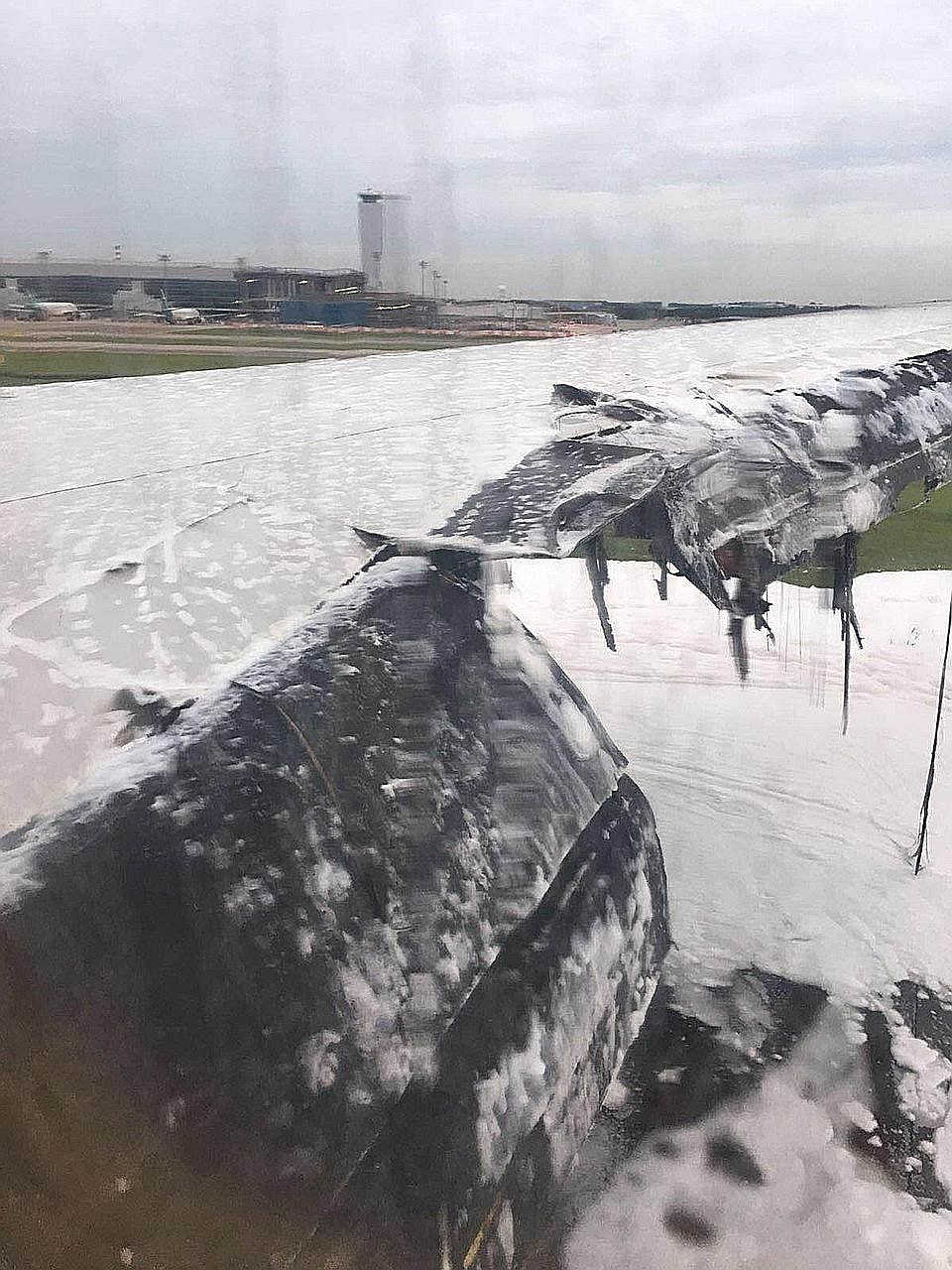
In a mid-air emergency, it is not always necessary or possible to land an aircraft immediately.
For example, it makes little sense to land at an airport that does not have the resources to deal with the emergency, experts said.
A spokesman for SIA said there are many factors when pilots decide whether to return to the departure airport or to divert to another closer airport. These include the state of the aircraft and the services required on arrival.
Pilots are trained in safety and emergency procedures and use on-board checklists to guide them. They may also consult engineering and fleet management teams.
He said: "The captain will then decide on where to land the aircraft, after considering all the available information and making the appropriate safety decision."
A senior pilot, who declined to be named, said: "A fire or smoke on board is the ultimate emergency and when that happens, you want to get the plane down as soon as possible, even if it means landing in water. The priority is to get everyone out quick."
In the case of an oil leak, which is possibly what happened to SQ368, the typical decision would be to land the plane as soon as possible, but not necessarily immediately.
"Could the pilots have landed the plane earlier? Possibly," said another pilot, adding: "And I have no doubt that if they thought they had to, they would have definitely done so but in this case, one would assume they were confident they could bring it back home safely."
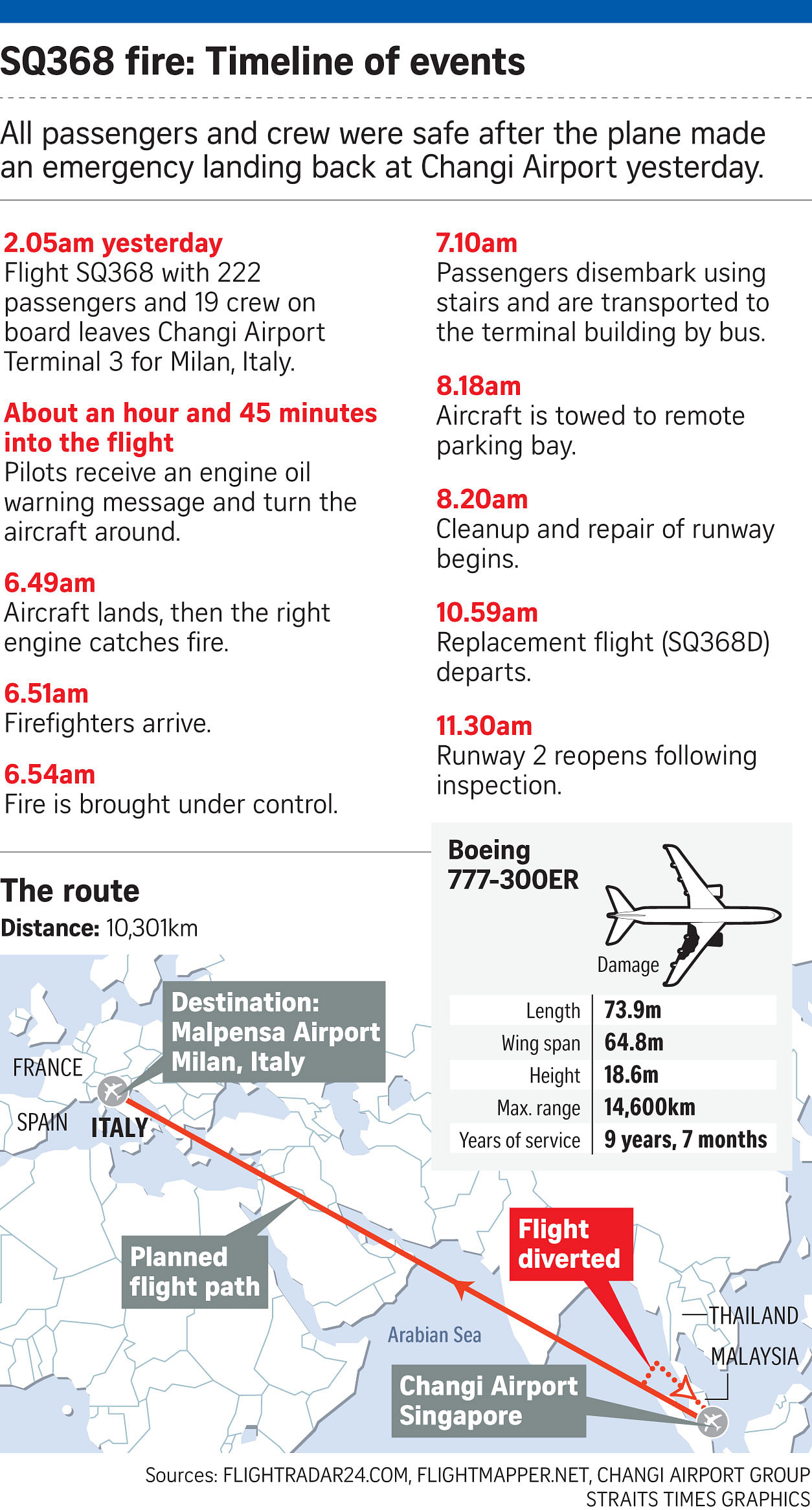
In 2014, an SIA plane bound for Singapore made an emergency landing in Baku, Azerbaijan, after a drop in aircraft cabin pressure. It made the emergency landing close to 10 hours after take-off.
Planes are designed to fly safely in an emergency, even with one engine shut down. The best example of this is, perhaps, Qantas Flight QF32, which caught fire mid-air shortly after it left Changi Airport on Nov 4, 2010. It was about two hours later that the Airbus 380 made an emergency landing at Changi, with the blast having left a gaping hole in an engine.
This case also showed that it is not always possible for passengers to disembark the moment the plane makes an emergency landing.
After the aircraft landed, all 466 people on board could disembark only after foam and water were sprayed to cool overheated brakes and cover the spilt fuel.
As for why the possible oil leak was not detected before the flight in the latest case, engineers said that while planes are checked regularly, with inspections before each flight, it is not always possible to detect problems that may surface in mid-air. Even if faults are detected, repairs may not need to be done immediately.
Did the pilots of SQ368 handle the emergency well? The fact that no one was hurt suggests they did. Could they have handled it better? Only the official probe will tell.


